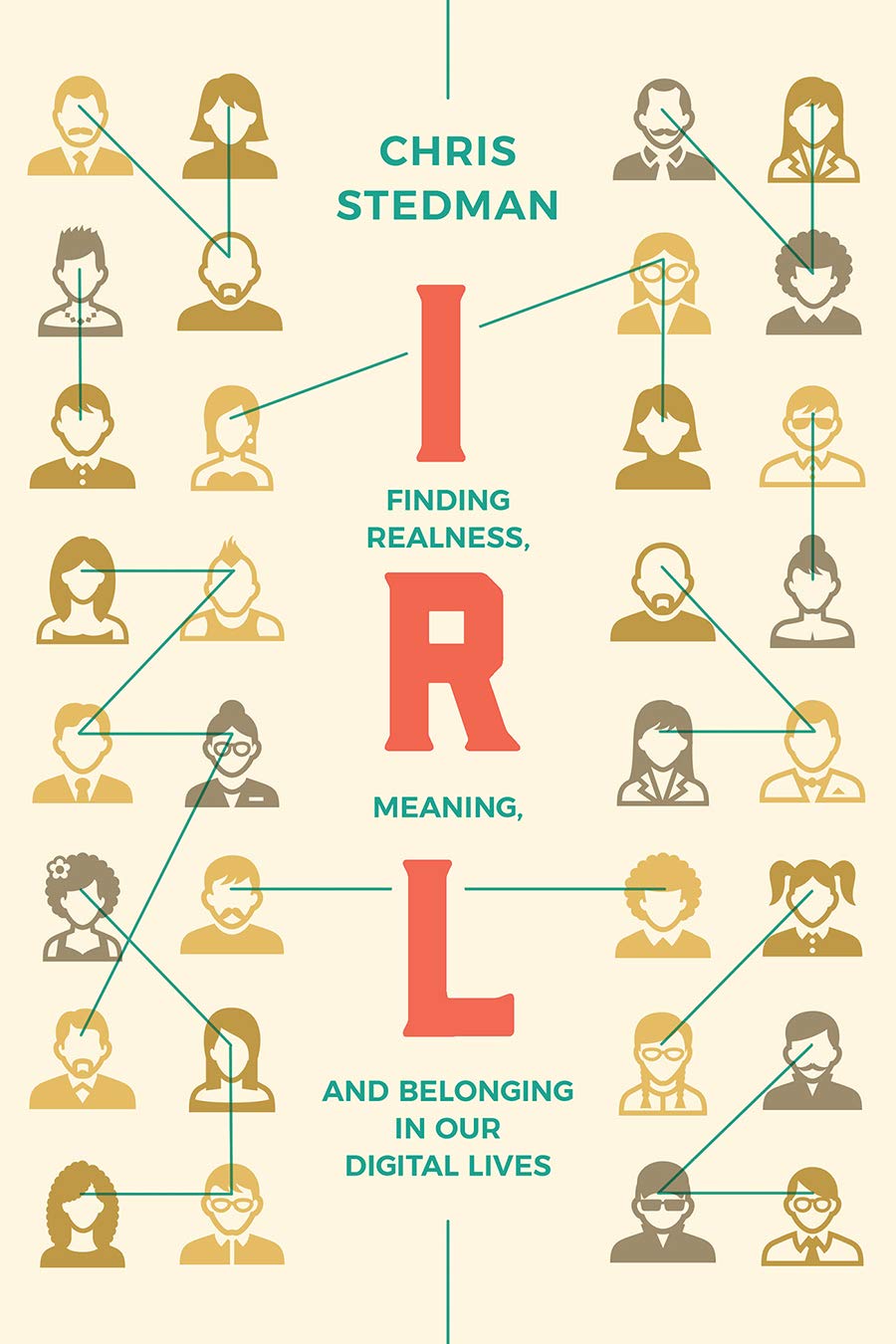When Chris Stedman started writing IRL: Finding Realness, Meaning, and Belonging in Our Digital Lives, he probably didn’t expect that seven months prior to its release, a global pandemic, a prolonged political nightmare/presidential election, and nationwide protests centered on police brutality and racism would intersect. We’ve all been cooped up and, if your screen-time report is anything like mine, spending too much time arguing (or, if you’re being kind to yourself, “being in conversation”) with strangers on the internet. Chris Stedman has certainly been online. In IRL, Stedman, an atheist and community organizer who has spent much of his life navigating interfaith spaces and the inherent tensions therein, explores how he came to be “very online” and details the growing complexity of online life. Over nine chapters, Stedman describes a handful of life experiences that drove him to the internet (a love of maps, his dog becoming a democratic socialist icon, and a bad breakup, to name a few) and how he arrived at the understanding that social media and the internet, while often carefully curated spaces that can feel like seemingly effortless and struggle-free slideshows of your friends’ personal and professional successes, can be so much more when mindfully engaged with. He also provides readers with practical advice on disconnecting to regain perspective and offers some much-needed wisdom on fostering empathy online.
While IRL is jam-packed with metaphors and beautifully described vignettes of Stedman’s life, the most interesting and perhaps central narrative of the book is the author’s experience with scabies. After a breakup that prompted a cross-country move and a life-reset, Stedman found himself with scabies, an infestation of microscopic mites that leads to prolonged and persistent itching and incredible physical discomfort. Physical discomfort aside, the emotional discomfort Stedman describes, driven by the isolating nature of a condition spread by physical contact, led to more time spent online and a period of personal growth.
Online, Stedman found community and camaraderie with others who described, in colorful bursts of tweets, their anxieties and uncertainties about their personal and professional lives. Other conversations connected Stedman with like-minded users who shared his interests. While the internet theoretically offers maximal control of information consumption, the reality is that curation and algorithms often lead to a feed that mostly reverberates your own thoughts back at you. This synchronicity of opinion allows us to see ourselves as part of a larger whole, Stedman writes, creating the imagined communities Benedict Anderson theorized, while also decomposing users’ memories, fragmenting that which they disagree with into untruths, and cementing what they, and the groups they identify with, believe in. Fine lines are drawn and Stedman reminds the reader that it is crucial to remain in those lines and appear consistent online in order to avoid the weaponization of the internet’s permanence, which he also notes is a problem exacerbated by the anonymity social media affords users, particularly if your hot take is found in the crosshairs of someone who disagrees with you.
Before the advent of the iPhone weekly screen-time report and the growing body of research that suggests that spending too much time on the internet and social media might be bad for us, the internet was a great place to explore interests and identities and to find community. Now, Stedman writes, “frequent social media use can put distance between the most online among us and an accurate perception of the world.” This is a massive problem, as growing political polarization online has led to negative social and cultural consequences, particularly in public health, and loss of trust in public institutions, like education and the government, which I’ve shown in my own work. However, Stedman posits that if social media users approached their online lives more mindfully, these problems might be mitigated.
Nowadays, time online can almost feel like a requisite of daily life as the carefully curated feeds of friends, family, and complete strangers have become the content that we scroll through while waiting in line, laying on the couch, or pretending to do our jobs. Social media is now just another part of our everyday, a layered digital space to connect with our communities, discuss the day’s news, and get into arguments with people about which season of Buffy the Vampire Slayer is the best. But social media needs to be treated with the same caution and empathy that offline interactions should be approached with. Stedman reminds us throughout IRL that these digital lives, though different, aren’t any less real than our offline ones so they must be managed with care. Disconnecting every now and then, changing perspective, and finding meaning and belonging in relationships that we might otherwise not consider offline can truly help us find a better place in real life.
IRL: Finding Realness, Meaning, and Belonging in Our Digital Lives by Chris Stedman Broadleaf Books Hardcover, 9781506463513, 336 pp. October 2020



